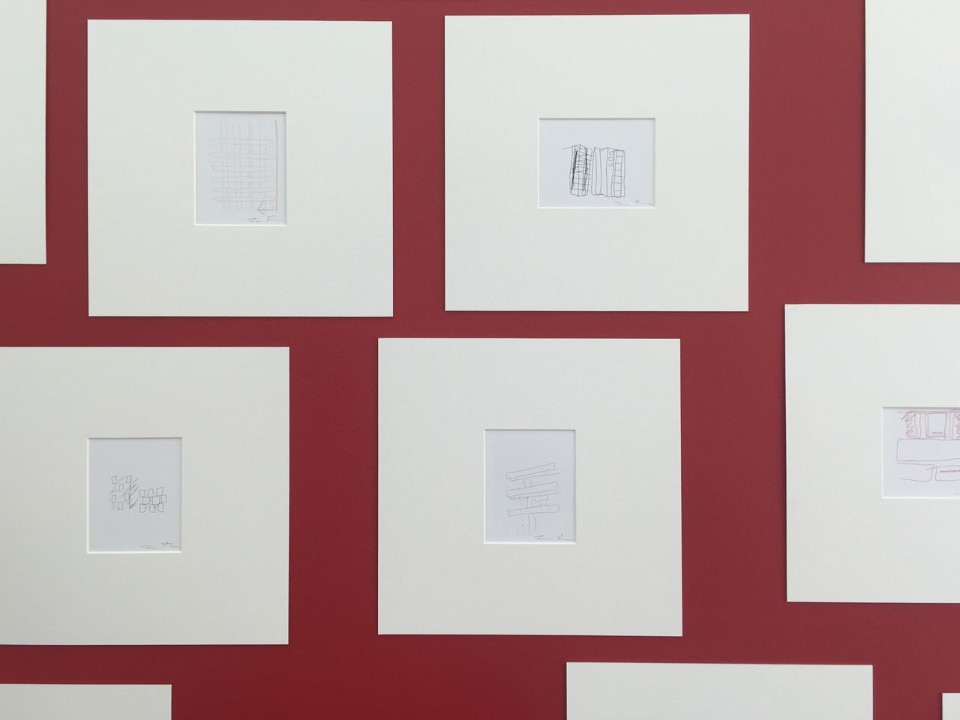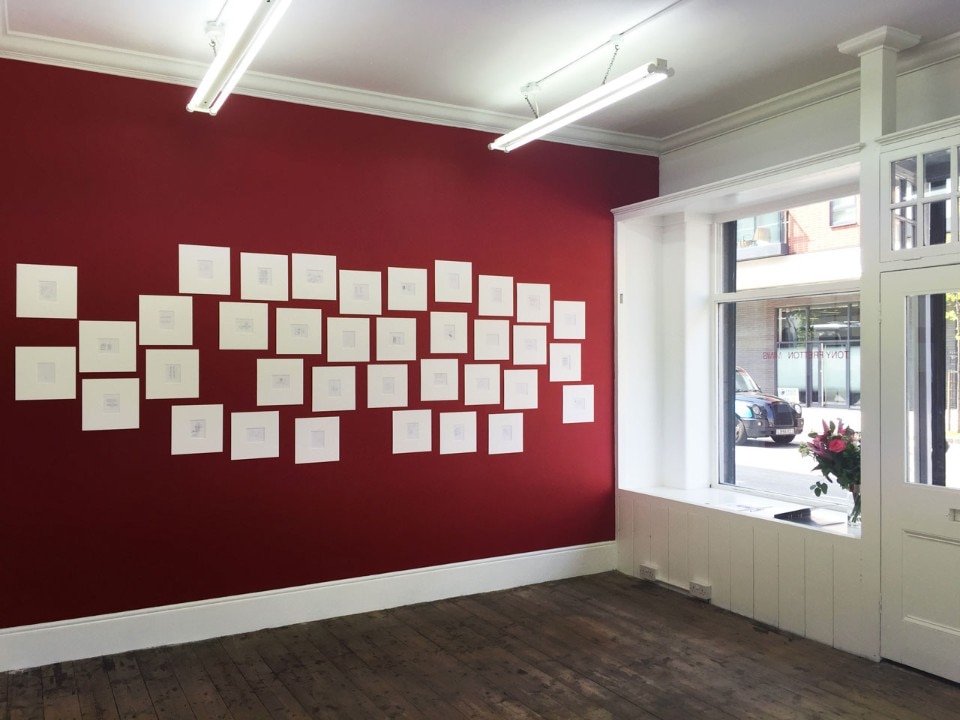
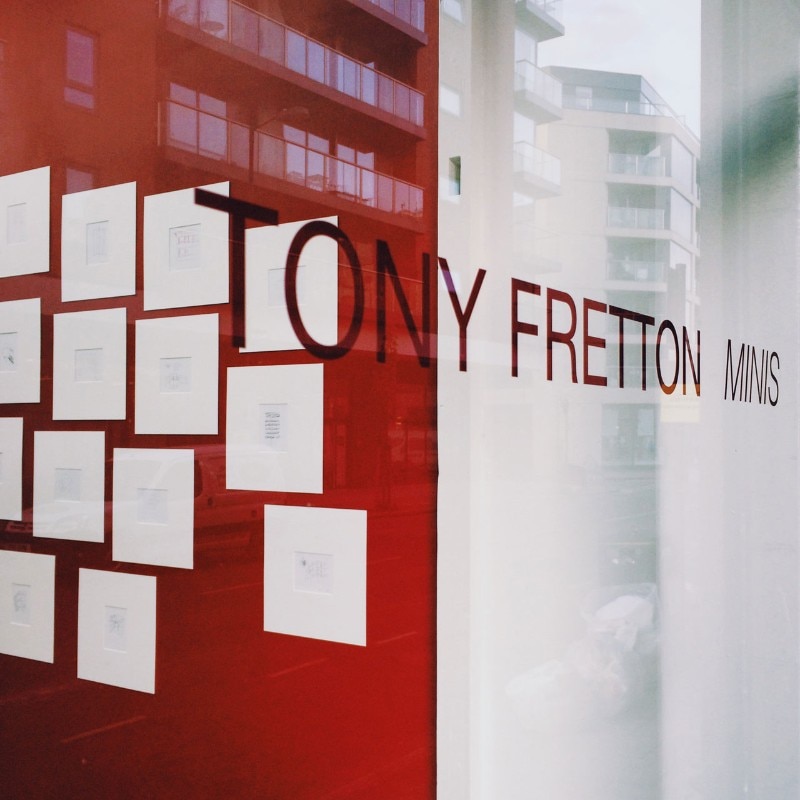
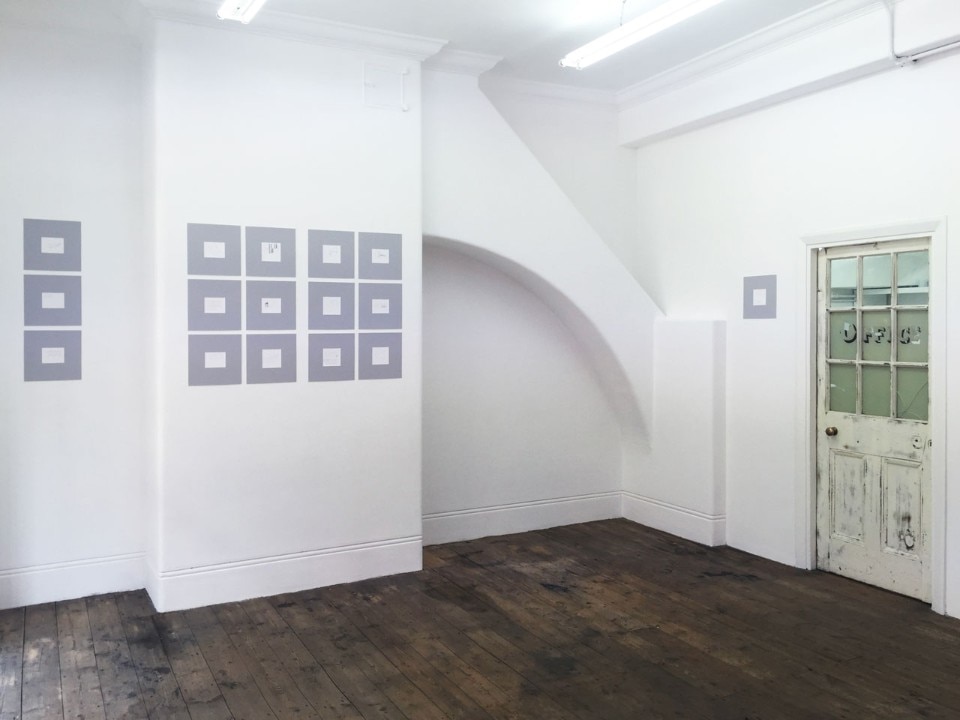
Sabrina Puddu: How did you meet and how did the idea of exhibiting Tony’s digital drawings come up?
Tony Fretton: I came to know of Marie’s Betts Project when she had beautiful exhibitions of drawings by Peter Märkli and then by Pier Vittorio Aureli, in a fabulous loft. I had never had an exhibition of my drawings, and we started a discussion about an exhibitioncreating one. Marie came to my office and we looked at my presentation drawings , of which– there were not many of them, so they could not be for put on sale, which was a problem for Marie. Then I went for silent for…
Marie Coulon: … One long year.
Tony Fretton: I had been collecting together the digital drawings, which I had been making since year 2000, first on a Palm Organiser, then on a mobile phone and finally on an iPad. I have always drawn in a sketchbook to show my colleagues how a detail might be made. These drawings were so inscrutable after the conversation that they are not exhibitable. The digital drawings were something else, a way of turning over the project in my mind. As I collected them into a file on my computer they looked as if they were on a continuous sheet, and I thought: “that’s That’s not so bad!” Without really thinking I emailed them to Marie asking: “can Can you do something with these?” And then we met in Marie’s new gallery, a small shop at 100 Central Street, which she was renovating…
Marie Coulon: And you broke a big hole, almost a crater, in my wall with a hammer.
Tony Fretton: Well, you asked me how the walls in the gallery were constructed so I tested them… After that we went to the local pub across the road, which had surprisingly good scotch.
Marie Coulon: In the pub he showed me the drawings on his mobile phone. I thought that the concept was amazing: drawings made on an I-pad with fingertips. I had never saw that before in architecture exhibition and I thought that it could be radical.
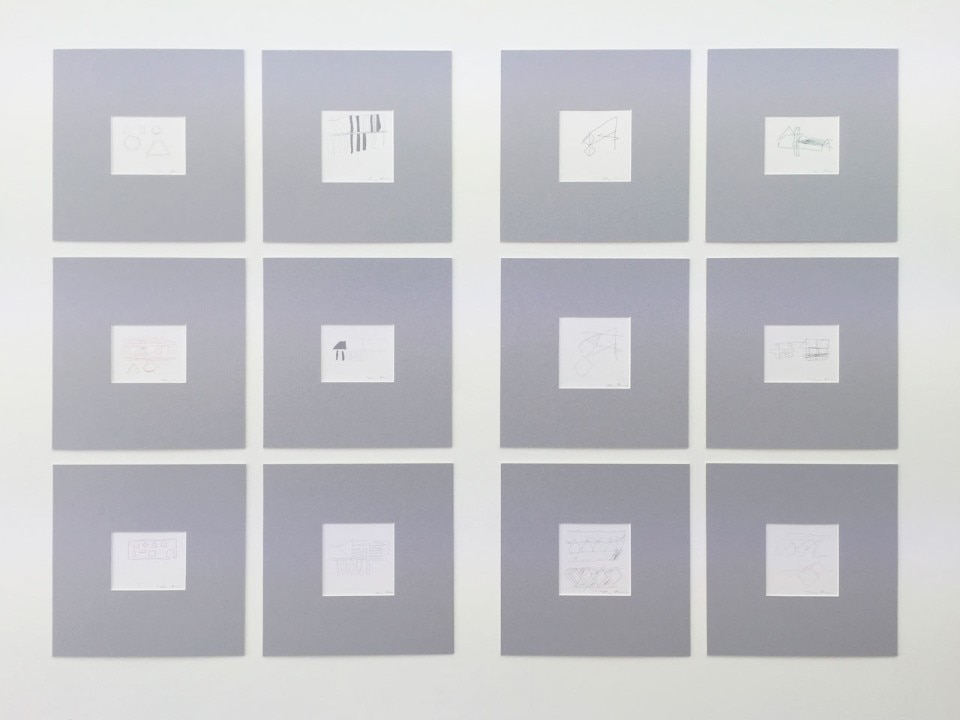
Sabrina Puddu: This was also the first time that you have shown digital drawings. How did you deal with the issue of reproduction?
Marie Coulon: You just make a limited numbered prints, like photography and in digital painting, like David Hockney and a lot of people.But, unlike these artworks, Tony’s drawings were not meant to be printed, or even put on in an exhibition.
Tony Fretton: When Marie first printed them, she found that the resolution was very low, and it could not be increased. So she had the brilliant idea of printing them very small and calling them “Minis”.
Sabrina Puddu: Tony, how do you like the title?
Tony Fretton: I wasn’t sure at the beginning but I like it now. Somehow it made clear that it was not an exhibition of art drawings but architecture, which is definitely not art.
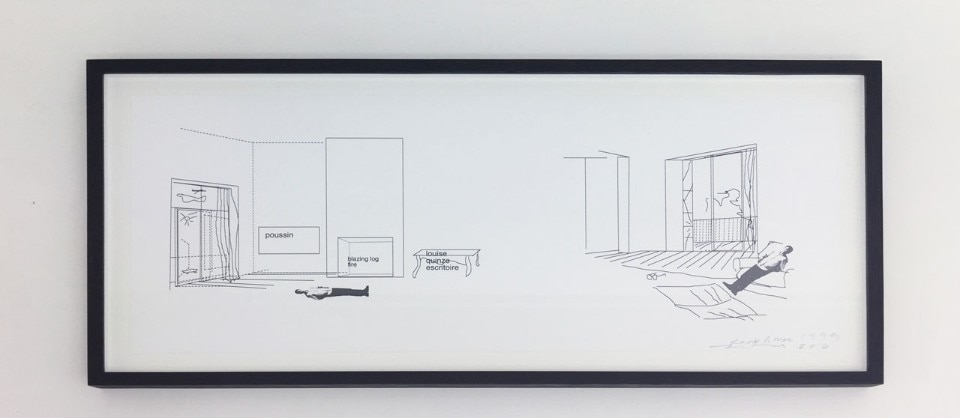
Sabrina Puddu: I wonder, Marie, is there a consistent line of interest in Betts Project? I mean, how do you choose the architects?
Marie Coulon: Life is too short to work with complicated people. And I choose on the quality of their work. The next exhibition will be of beautiful drawings from the 1970’s and 80’s by Lars Lerup, the former dean of Rice University in Texas, which will open on Thursday 16 June. I want to exhibit a very different range of people and work. I think it is really good to mix top architects like you with people who have never showed their work, or did it so a long time ago.
Tony Fretton: What I admire about Marie’s approach is its financial and intellectual independence. With the exception of the Camden Arts Centre and a few others, most public art institutions in London have been distorted by the ideology of their paymasters into places of entertainment where thoughtful exhibitions are increasingly less possible.
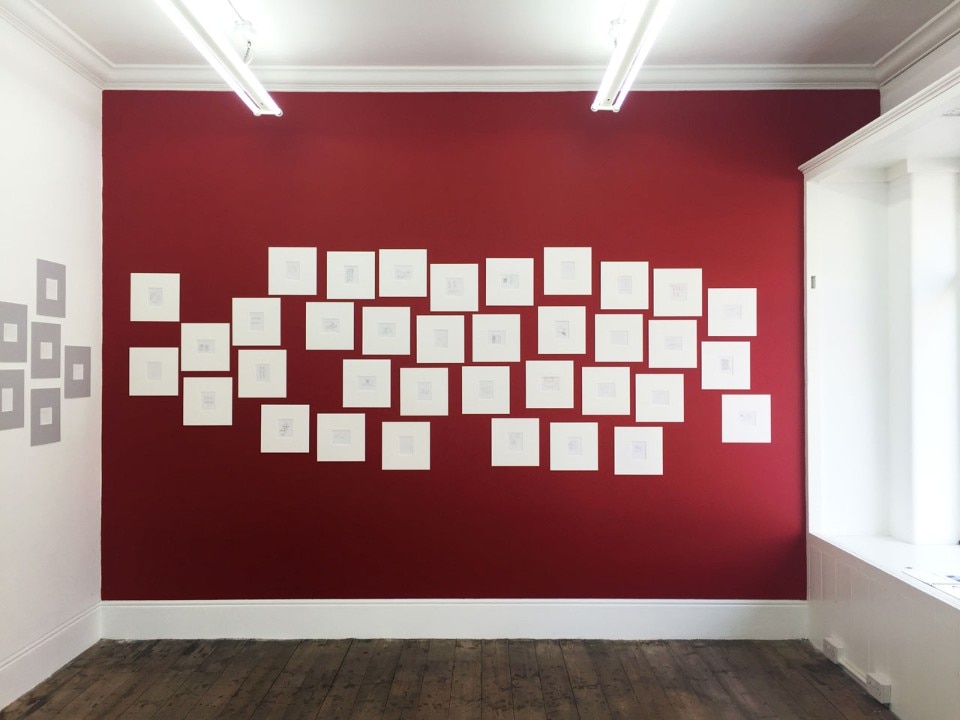
Sabrina Puddu: Tony, you often refer to architecture as a collective practice – you wrote that “designing, constructing, establishing meaning in buildings are collective activities” – and you seem to recurrently refer to buildings as formal entities made by architects for a public world, open to the interpretation, use and misuse by everyone. In Katherine Clarke’s text for the exhibition she places your digital sketches not at the start of your design process but later and as a way of opening up a form you have designed to the uncertainty of future occupation and perception by people. She argues that your sketches acknowledge how “architecture is only the start,” because the full realisation of a building will need the contribution of “others”.
Tony Fretton: She is very perceptive. As a designer, you have to recognise that your buildings – and your drawings – will have different meanings for other people. I am fascinated by the way that physical objects are widely open to interpretation. One of the neighbours of the Red House said that he thought it looked like Lenin’s mausoleum. In his anger he was right, as I found last year when I was in Moscow. It is quite like Lenin’s mausoleum, which is actually rather good… You know that the Berlin Free University, which is made of Corten, is called the Rust-Hut and the Philharmonie is called the Pregnant Oyster. Your buildings stop being yours and become somebody else’s. I accept that and work with it. And the drawings, too will become somebody else’s.
Marie Coulon: I think that this is what people were finding in the exhibition. This drawing of Westkaai Towers, for example, is really finelined. It looks so fragile and poetic. You can feel the kind of atmosphere. It is not just a working drawing; there is something more. At the opening I could see that some people saw them as plans, some as columns and bricks, and that other people that were just saw the drawings and what they could put of themselves into them. Also, there is a lot of humour in your sketches. The drawing in orange lines with the arrow saying “this way up”, and it is pointing sideways… A lot of people liked it. There is a sense of humour, because they’re just for you, – they are very personal.
Tony Fretton: Well, there is humour when you work like this. Like the title “Olympic Pork” on one of the drawings. We were working on a project for the Olympic park and it was fairly obvious that we were not going to win. In America they have the phrase “Pork Barrel Politics”, which I was thinking of when I wrote the name.
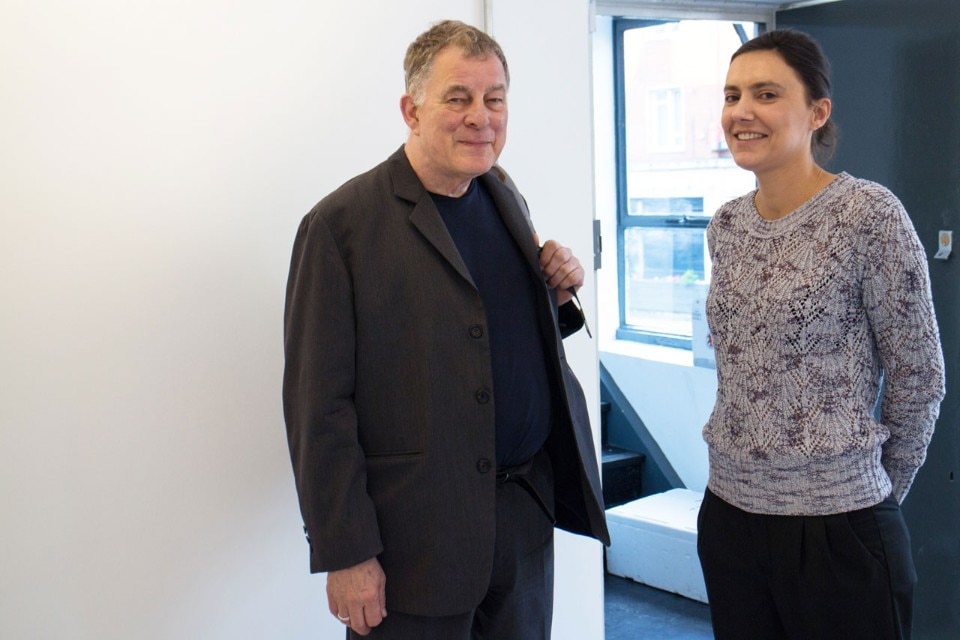
Sabrina Puddu: Well, it looks like your sketches are somehow a space of freedom where you can express whatever you think. It is the same with your Twitter account!
Tony Fretton: Ah, that. I am insomniac and read a lot of newspapers during the night. I re-tweet articles that make me angry, as well as photos of things I see. Twitter is like sketching. It is good to show you are politically engaged, especially in these times.
Sabrina Puddu: Do you make architecture that is politically engaged?
Tony Fretton: I think I make architecture that is socially engaged. In the Lisson Gallery, the relationship between art people inside and locals outside has a certain polarity… The Festival Hall on the Southbank, made for the 1951 Festival of Britain, is socially engaged. The underside of the auditorium shows that Beethoven is being played above, while the floor underneath was planned for dancing and popular music. Photographs of the Festival of Britain show people ballroom dancing outdoors in their raincoats. The combination of popular culture and high culture is particularly attractive to me. Maybe that is an old fashioned social-democratic view, but I think it is still valid. For me architecture has to strive to appeal directly to people at one end of its spectrum and to contribute to formal culture at the other.


